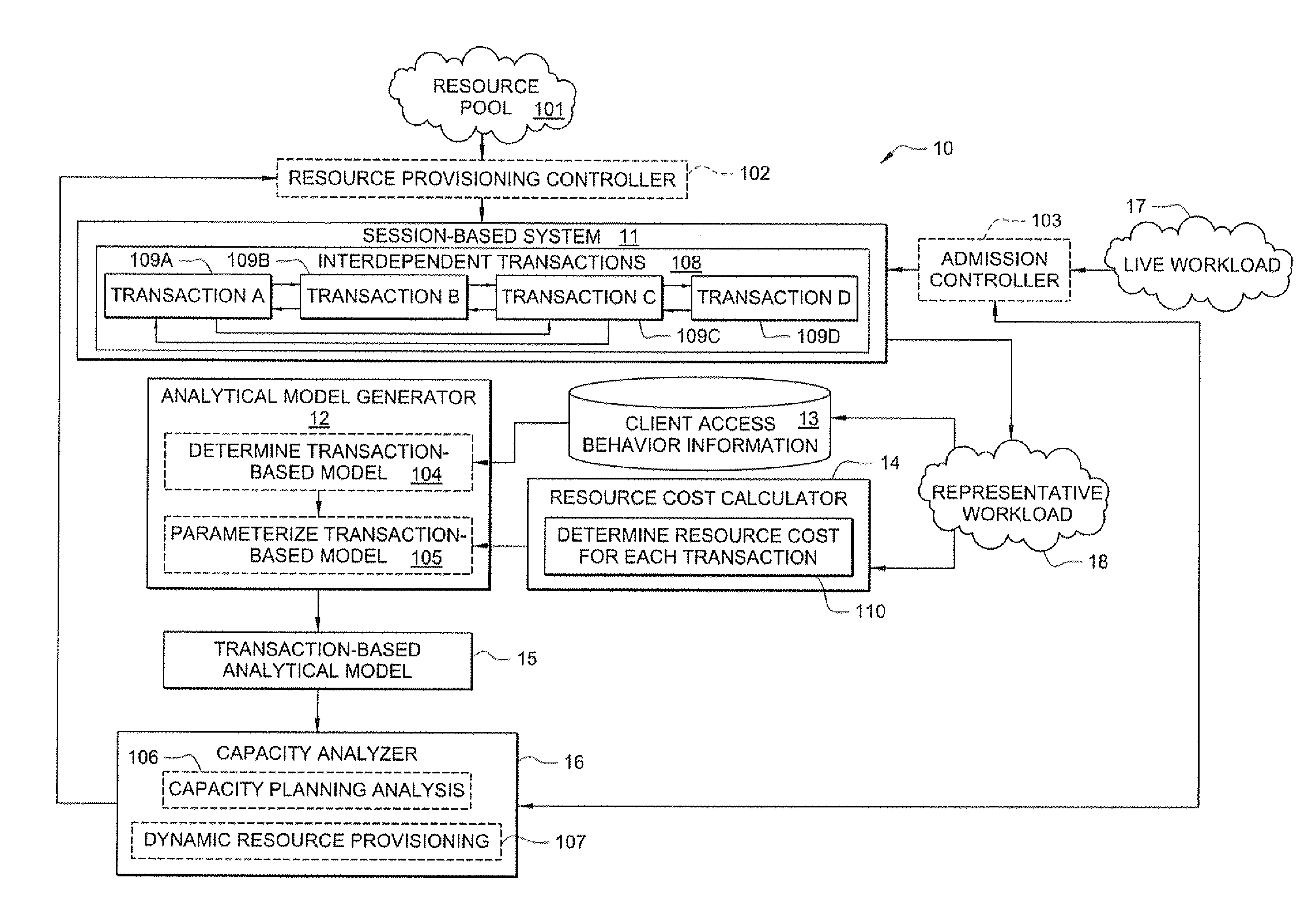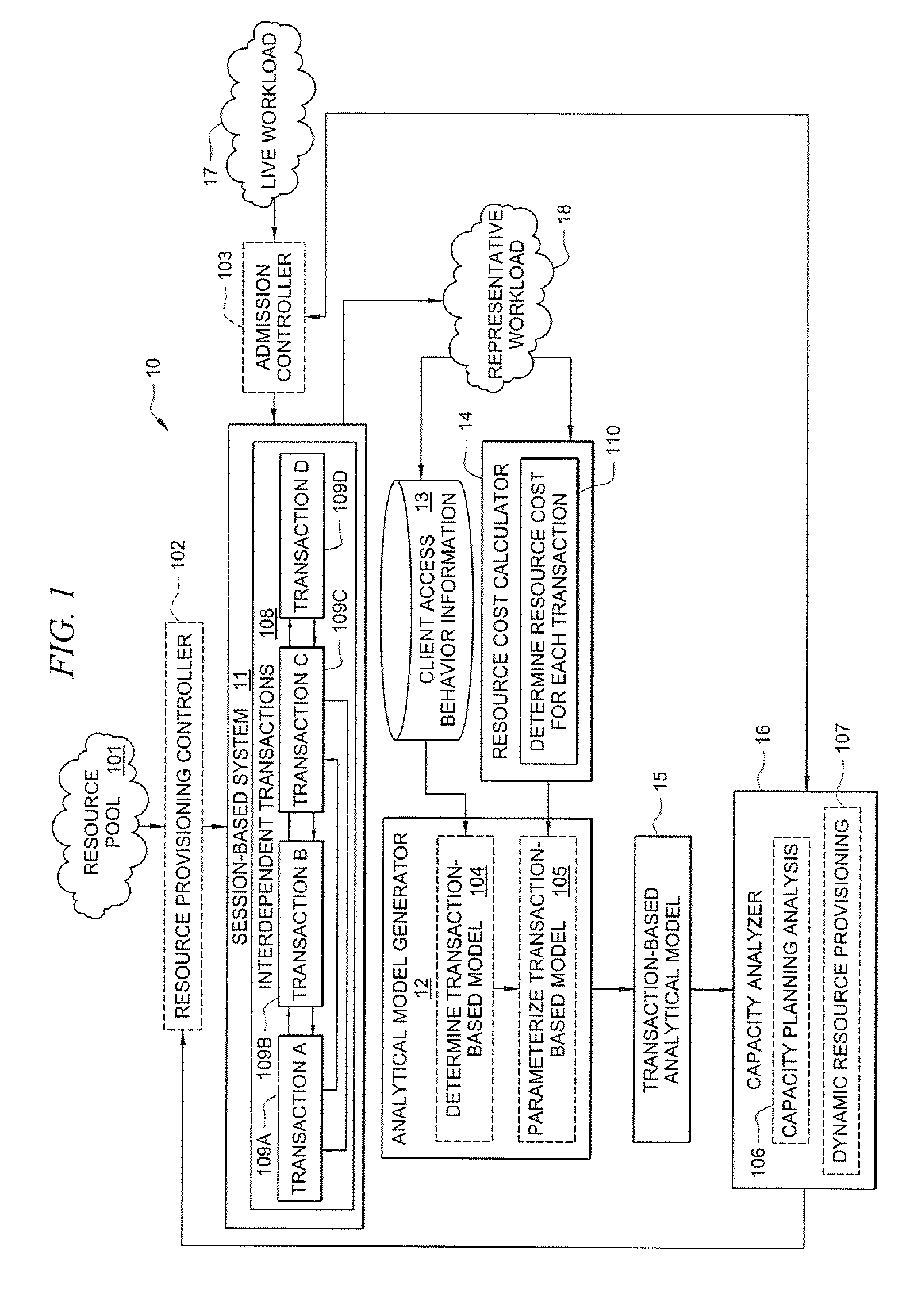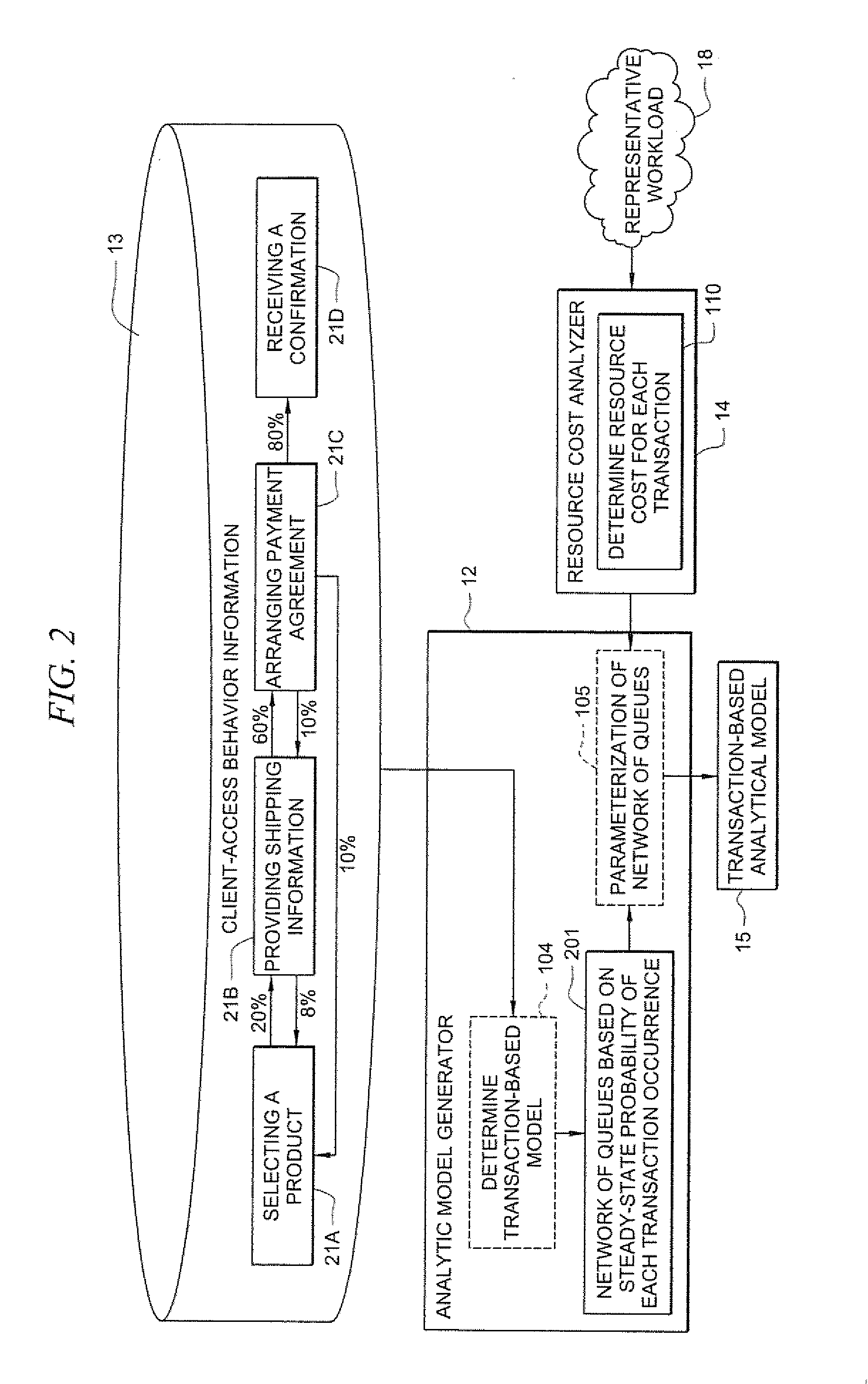System and method for modeling a session-based system with a transaction-based analytic model
a transaction-based analytic model and system technology, applied in the field of system and method for determining the transaction-based analytic model of a session-based system, can solve the problems of predicting and controlling the issues surrounding system performance and capacity planning, which are difficult (and sometimes overwhelming) to many organizations, and affect customer satisfaction. the immediate impact of application performance issues
- Summary
- Abstract
- Description
- Claims
- Application Information
AI Technical Summary
Benefits of technology
Problems solved by technology
Method used
Image
Examples
Embodiment Construction
[0029]Various embodiments of the present invention are now described with reference to the above figures, wherein like reference numerals represent like parts throughout the several views. As described further below, embodiments of the present invention provide a system and method for generating a transaction-based analytic model for modeling a session-based system. The transaction-based analytic model is stateless, and it provides an efficient and accurate model for representing a session-based system (which is not stateless). In certain embodiments, the stateless transaction-based model is derived based on the probabilistic transaction mixes observed for the session-based system being modeled. For instance, in one embodiment, the analytic model employs a closed system of queues (e.g., where each queue represents a tier of a multi-tier system being modeled). A corresponding cost for each transaction is also determined, and used for parameterizing the transaction-based model.
[0030]F...
PUM
 Login to View More
Login to View More Abstract
Description
Claims
Application Information
 Login to View More
Login to View More - R&D
- Intellectual Property
- Life Sciences
- Materials
- Tech Scout
- Unparalleled Data Quality
- Higher Quality Content
- 60% Fewer Hallucinations
Browse by: Latest US Patents, China's latest patents, Technical Efficacy Thesaurus, Application Domain, Technology Topic, Popular Technical Reports.
© 2025 PatSnap. All rights reserved.Legal|Privacy policy|Modern Slavery Act Transparency Statement|Sitemap|About US| Contact US: help@patsnap.com



